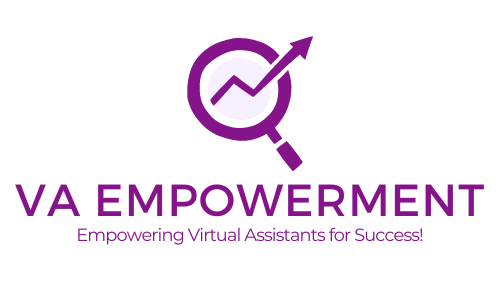How Do I Handle Client Communication And Expectations?
You might find yourself wondering, “How do I effectively navigate client communication and expectations?” This crucial aspect of any business relationship can sometimes feel overwhelming, but fear not, for in this article, we will guide you on a journey to become a master communicator and meet your client’s expectations like never before. By understanding their needs, adopting an empathic approach, and setting clear boundaries, you can ensure strong and fruitful collaborations that will lead to mutual success. So, let’s embark on this enlightening exploration together and discover the key strategies to handle client communication and expectations with confidence.
Setting Clear Expectations
Clearly Define the Scope of Work
When working with clients, it is crucial to establish a clear and concise scope of work. Clearly defining what tasks will be performed and what is not included in the project helps set realistic expectations and avoids any misunderstandings later on. By providing a detailed breakdown of the project’s requirements and objectives, you ensure that both you and the client are on the same page from the beginning. This clear definition of the scope of work serves as a reference point throughout the project and helps prevent scope creep.
Establish Realistic Timelines and Deadlines
Another important aspect of setting clear expectations is establishing realistic timelines and deadlines. It’s essential to consider factors such as the complexity of the project, availability of resources, and potential roadblocks when determining project timelines. Communicating these timelines to your client and gaining their agreement ensures that both parties have a shared understanding of how long each phase of the project will take. Realistic deadlines not only manage expectations but also promote trust and credibility with the client.
Communicate Project Budget
The project budget is a vital component that needs to be communicated clearly and upfront. Discussing the budget with your client allows both parties to understand the financial constraints of the project. Be transparent about the costs involved and any potential additional expenses that may arise during the course of the project. This open communication about the budget helps in managing expectations, avoiding surprises later on, and building trust with the client.
Outline Deliverables and Milestones
To ensure a smooth project flow, it is necessary to outline the deliverables and milestones involved. Clearly communicating what the client can expect at each stage of the project helps manage their expectations. Providing a roadmap of the project, including key milestones and deliverables, allows the client to visualize the progress and understand the overall timeline. Regularly updating the client on the completion of deliverables and milestones reinforces transparency, accountability, and keeps both parties aligned.
Establishing Effective Communication Channels
Choose the Right Communication Platform
Selecting the appropriate communication platform is essential for effective client communication. Consider the nature of the project and the client’s preferences when choosing the platform. Options range from email and phone calls to project management tools and chat platforms. Ensure that the selected platform aligns with the client’s communication style and offers features that accommodate collaboration and information sharing.
Define Preferred Communication Methods
To avoid miscommunication, it is important to define the preferred communication methods with your client. Some clients may prefer regular meetings, while others may prefer written updates. Understanding the client’s communication preferences helps tailor your approach to match their needs. Establishing a clear protocol for communication ensures that both parties are on the same page and fosters a productive working relationship.
Set Communication Boundaries and Availability
While effective communication is essential, it is equally important to set communication boundaries and availability. Clearly communicate your available office hours and response times to the client. Setting realistic expectations regarding your availability prevents misunderstandings and ensures that the client knows when they can expect a response. Communicate any instances where you will be unavailable or have limited availability well in advance to minimize any potential disruptions.

Active Listening and Understanding Client Needs
Listen Attentively to Client’s Requirements
Active listening is a fundamental skill when dealing with clients. Pay close attention to the client’s requirements, objectives, and concerns. By actively listening, you demonstrate empathy and understanding towards their needs. Take notes during conversations and ask for clarification when needed to ensure a complete understanding of the client’s expectations.
Ask Relevant Questions for Clarification
To avoid assumptions and misunderstandings, it is important to ask relevant questions to clarify any ambiguities. Seeking clarification helps fill in any gaps and ensures that you have a comprehensive understanding of the client’s expectations. Asking questions also demonstrates your commitment to delivering high-quality work and your interest in meeting the client’s needs effectively.
Seek Feedback and Confirm Understanding
Seeking feedback and confirming understanding is crucial to maintain a clear line of communication with the client. Regularly check in with the client to ensure that your understanding aligns with their expectations. By seeking feedback throughout the project, you can address any issues early on and make necessary adjustments. This feedback loop helps build trust and ensures that the client feels heard and valued.
Maintaining Consistent and Timely Updates
Regularly Update Clients on Project Progress
Consistency is key when it comes to client communication. Regularly updating clients on project progress keeps them informed and reassured. Provide updates on completed tasks, milestones achieved, and any challenges encountered. Communication frequency may vary depending on project complexity and client preferences. However, it’s essential to strike a balance between providing timely updates and avoiding excessive interruptions.
Provide Accurate and Honest Status Reports
When sharing project updates, it is crucial to provide accurate and honest status reports. Transparency is the foundation of a strong client relationship. Share both successes and challenges, ensuring that the client has a realistic understanding of the project’s progress. Address any potential delays or obstacles early on, along with a proposed plan to mitigate them. Honest communication builds trust, even in challenging situations.
Inform Clients of any Delays or Issues
In the event of any delays or issues, it is vital to promptly inform your client. Open communication about setbacks helps manage expectations and allows the client to adjust their own plans accordingly. Clearly communicate the reasons behind the delays or issues and outline a revised timeline or solution. Proactively addressing problems demonstrates your commitment to resolving challenges and maintaining a transparent relationship with the client.

Managing Client Expectations
Be Transparent and Manage Expectations from the Start
Managing client expectations begins from the very first interaction. Be transparent about what you can deliver, the limitations of the project, and potential challenges. Clearly discuss any potential risks and how you plan to mitigate them. By setting realistic expectations from the start, you establish a solid foundation for successful client communication and avoid disappointments down the line.
Educate Clients on Realistic Timeframes and Limitations
Clients may not always have a deep understanding of the timeframes and limitations involved in their project. It is your responsibility to educate them on realistic expectations. This can include explaining the time it takes to complete specific tasks, the availability of resources, or any external factors that may impact the project timeline. By providing this education, you help manage the client’s expectations, ensuring they are aligned with the project’s realities.
Address Changes and Scope Creep Effectively
Change is an inevitable part of any project. However, it is important to address changes and scope creep effectively to maintain the project’s success. When requested changes or additional requirements arise, clearly communicate any potential impacts on timelines, resources, and budget. Discuss the implications with the client and, if necessary, negotiate any adjustments to the original scope of work. Open and transparent communication helps manage expectations, preventing scope creep and maintaining project focus.
Handling Difficult Clients and Conflict Resolution
Remain Calm and Professional
Dealing with difficult clients can be challenging, but it is important to remain calm and professional throughout the process. Emotions can run high in challenging situations, but responding with empathy, respect, and professionalism is crucial. Avoid getting defensive or confrontational, as this can exacerbate the conflict. By staying composed, you can diffuse tension and promote effective communication.
Empathize with the Client’s Concerns
Empathy is a powerful tool for resolving conflicts with clients. Seek to understand their concerns and frustrations, acknowledging their perspective and emotions. Putting yourself in their shoes allows you to respond with compassion and find common ground. By validating their feelings, you can work towards finding a mutually beneficial solution.
Finding Win-Win Solutions
Conflict resolution should focus on finding win-win solutions that address the needs of both parties. Listen to the client’s concerns, propose alternative approaches, and negotiate a resolution that satisfies both parties’ objectives. Collaborative problem-solving fosters a positive working relationship and demonstrates your commitment to the client’s satisfaction.

Building Trust and Credibility
Deliver High-Quality Work and Meet Client’s Expectations
Trust and credibility are built on consistently delivering high-quality work that meets or exceeds the client’s expectations. Strive for excellence in every aspect of the project, from the deliverables to the communication. Consistently meeting deadlines, providing accurate information, and delivering exceptional results will demonstrate your reliability and establish trust with your client.
Honor Commitments and Deadlines
Meeting commitments and deadlines is crucial for building trust with clients. When you promise to deliver something, ensure that you follow through. By consistently honoring your commitments, you show your dedication and reliability. If unforeseen circumstances arise that may affect your ability to meet a deadline, communicate proactively with your client and negotiate a revised timeline.
Be Responsive and Reliable
Being responsive and reliable is crucial for maintaining a strong client relationship. Respond promptly to client inquiries, whether it’s through email, calls, or other communication channels. Even if you don’t have an immediate answer, acknowledge the client’s message and provide an estimated timeframe for when you will have more information. Consistently being there for your clients builds their confidence in your abilities and fosters a sense of reliability.
Providing Excellent Customer Service
Respond Promptly to Client Inquiries
Prompt responses to client inquiries are essential for delivering excellent customer service. Acknowledge client messages as soon as possible, even if it is to provide a timeline for a more detailed response. Quick and attentive communication shows your commitment to their needs and builds a positive client experience.
Be Courteous and Polite in Communication
Maintaining a courteous and polite tone in all client interactions is crucial for delivering excellent customer service. Use appropriate language, be respectful, and avoid confrontational or offensive language. Politeness and courtesy set the tone for a positive working relationship and create a comfortable environment for effective communication.
Go the Extra Mile to Exceed Expectations
Exceeding client expectations is a key element of exceptional customer service. Look for opportunities to go above and beyond what was initially agreed upon. It could be offering additional suggestions or insights, providing complementary resources or delivering work before the deadline. By consistently adding value and surprising your clients with exceptional service, you create a memorable experience that sets you apart from competitors.
Using Tools and Technology for Efficient Communication
Utilize Project Management Software
Project management software can greatly enhance communication efficiency. These tools provide a centralized platform to share project updates, collaborate on documents, track progress, and manage deadlines. Utilizing such software streamlines communication, ensures everyone is working with the latest information, and promotes transparency by keeping all relevant project information in one place.
Implement Client Relationship Management (CRM) System
A client relationship management (CRM) system can greatly improve communication and enhance client relationships. CRM software allows you to store client contact information, track communication history, and manage client interactions. By implementing a CRM system, you can access important client details quickly, stay organized, and provide personalized communication tailored to each client’s needs.
Leverage Video Conferencing and Collaboration Tools
Video conferencing and collaboration tools are invaluable for remote or distributed project teams. These tools enable face-to-face interactions, screen sharing, and real-time collaboration on documents. By leveraging these technologies, you can enhance communication, foster teamwork, and build stronger relationships with clients. The ability to visually connect and collaborate fosters a sense of trust, even when physically distant.
Seeking Feedback and Continuous Improvement
Request Client Feedback on Communication and Experience
Seeking client feedback on your communication and their overall experience is essential for continuous improvement. Regularly solicit feedback through surveys, interviews, or feedback forms. This feedback provides valuable insights into areas of improvement, highlights strengths to leverage, and helps you refine your communication approach. Actively demonstrating your commitment to improving based on client feedback shows that you value their input and are dedicated to providing the best service possible.
Implement Suggestions for Process Enhancement
When clients provide suggestions for process enhancement, take them seriously and evaluate their feasibility. Actively consider implementing changes that will improve communication, project management, and overall client experience. By incorporating client suggestions, you show the client that their input matters and you are committed to continuous improvement.
Learn from Past Mistakes and Implement Corrective Actions
Mistakes happen, but it is important to learn from them and take corrective actions. When errors occur, openly acknowledge and address them with the client. Apologize for any inconvenience caused and outline the steps you will take to rectify the situation. Learning from past mistakes and implementing corrective actions demonstrates a commitment to growth and improvement. It also reassures the client that you take their concerns seriously and are proactive in preventing similar issues in the future.
In conclusion, effectively handling client communication and expectations is crucial for building strong relationships and delivering successful projects. By setting clear expectations, establishing effective communication channels, actively listening and understanding client needs, maintaining consistent and timely updates, managing client expectations, handling difficult clients and conflict resolution, building trust and credibility, providing excellent customer service, using tools and technology for efficient communication, seeking feedback, and continuously improving, you can ensure a positive client experience and drive long-term success.

